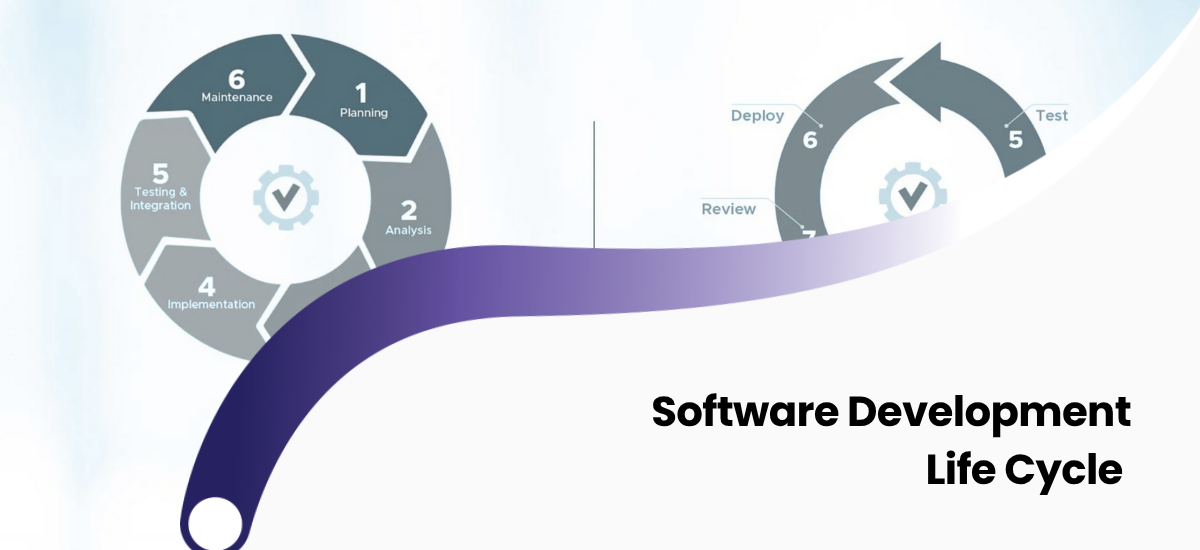The world of technology is evolving faster than ever. Every day brings new tools, new apps, and new approaches. But one thing remains constant — behind every successful software product lies proper planning, a clear strategy, and a systematic process. That’s where SDLC (Software Development Life Cycle) — the life cycle of software development — comes into play as the foundation of any modern tech project.
Simply put, SDLC is a “roadmap” that guides a software project from concept to deployment and ongoing maintenance. This structured approach helps teams minimize risks, reduce costs, and deliver high-quality results on time. At Crocusoft, every project follows this principle — well-organized, transparent, and result-oriented.
What Is SDLC and Why It Matters
SDLC — or Software Development Life Cycle — defines every step a product takes from idea to release. It’s not just a technical process; it’s a way to organize teamwork, ensure accountability, and maintain consistent quality. SDLC helps companies avoid chaos, control budgets, and meet deadlines efficiently.
Without SDLC, development can easily become unpredictable — deadlines are missed, costs increase, and product quality suffers. That’s why SDLC is not just about code, but about building a reliable process that drives success.
Key Stages of the Software Development Life Cycle
1️⃣ Requirements Analysis — Understanding the Goal
Every successful project starts with clear goals. In this phase, the team identifies what the client needs, what problems the product will solve, and what features are required. At Crocusoft, we take a deep-dive approach — analyzing the client’s business model, defining measurable objectives, and creating a detailed roadmap.
Result: A clear project plan (SRS) and well-defined technical requirements.
2️⃣ System Design — Building the Blueprint
Once the requirements are defined, it’s time to plan the technical structure. The team chooses the technology stack, defines the system architecture, and designs the user interface. Crocusoft relies on modern tools such as React, .NET Core, and Figma to build intuitive, scalable, and visually appealing systems.
Result: A complete technical design document (TDD) and UI/UX prototype ready for development.
3️⃣ Development — Turning Ideas Into Code
This is where the concept becomes reality. Developers start coding, integrating, and creating functionality. Crocusoft applies the Agile methodology — breaking the work into sprints to deliver value faster and ensure flexibility.
The backend team builds APIs and core logic, while the frontend team focuses on the interface and user experience. Tools like Git and CI/CD pipelines ensure version control, testing, and automation throughout development.
Result: A working MVP (Minimum Viable Product) ready for testing.
4️⃣ Testing — Quality Assurance and Stability
No software product is complete without testing. The goal is to detect errors early, measure performance, and guarantee that the product works flawlessly. At Crocusoft, multiple testing layers are applied:
- Unit testing — checks individual components;
- Integration testing — verifies communication between modules;
- UAT (User Acceptance Testing) — ensures the product meets user expectations;
- Performance & security testing — checks system speed and reliability.
Result: A stable, secure, and high-performing system ready for production.
5️⃣ Deployment — Going Live
After testing, the system is released into the production environment. Crocusoft automates this stage using CI/CD pipelines to deploy faster, safer, and with minimal downtime. Updates and patches can later be rolled out seamlessly.
Result: The software is live and accessible to real users.
6️⃣ Maintenance — Continuous Improvement
Once launched, the software enters a new stage — maintenance and optimization. Crocusoft provides 24/7 technical support, security updates, and new feature development. The goal is to keep the product fast, reliable, and secure over time.
Result: A long-lasting, efficient, and future-proof software system.
Popular SDLC Models
There is no one-size-fits-all SDLC model. The approach depends on the project’s goals and scale:
- Waterfall: A step-by-step linear model, ideal for simple projects.
- Agile: A flexible, iterative process focused on adaptability and collaboration.
- Spiral: A risk-based iterative approach with ongoing evaluation.
- DevOps Model: Combines development and operations for automation and continuous delivery.
At Crocusoft, we often use a hybrid Agile + DevOps model — combining the flexibility of Agile with the automation power of DevOps for speed, reliability, and transparency.
SDLC and DevOps — A Perfect Partnership
If SDLC is the roadmap, DevOps is the engine that drives it. DevOps automates SDLC processes through CI/CD, containerization (Docker, Kubernetes), and monitoring. This integration shortens release cycles and improves software reliability. Crocusoft’s DevOps engineers implement these practices across projects to ensure scalability and efficiency.
Why SDLC Is Important for Businesses
SDLC delivers value not only to development teams but also to the entire business:
- Fewer errors: Continuous testing minimizes bugs and risks.
- Time & cost savings: Automation speeds up delivery and reduces manual effort.
- Team alignment: All departments work cohesively with clear milestones.
- Customer satisfaction: Stable performance and consistent updates build trust and loyalty.
The Crocusoft Approach to SDLC
Every Crocusoft project — from ERP and CRM systems to mobile apps — follows a structured SDLC framework. Each phase is well-documented, monitored, and optimized for efficiency. This ensures transparency, predictable outcomes, and long-term reliability for every client.
Frequently Asked Questions (FAQ)
1. What is SDLC?
SDLC (Software Development Life Cycle) is a structured process that outlines the stages of planning, designing, developing, testing, and maintaining software.
2. Why is SDLC important?
It improves project quality, reduces risks, and ensures smooth collaboration between teams throughout development.
3. Which SDLC model is best?
The combination of Agile and DevOps offers the best balance of flexibility, speed, and control for modern projects.
4. Is SDLC only for large companies?
No. Even small and mid-sized businesses can benefit from SDLC by gaining structure and consistency in their projects.
 +994512060920
+994512060920





